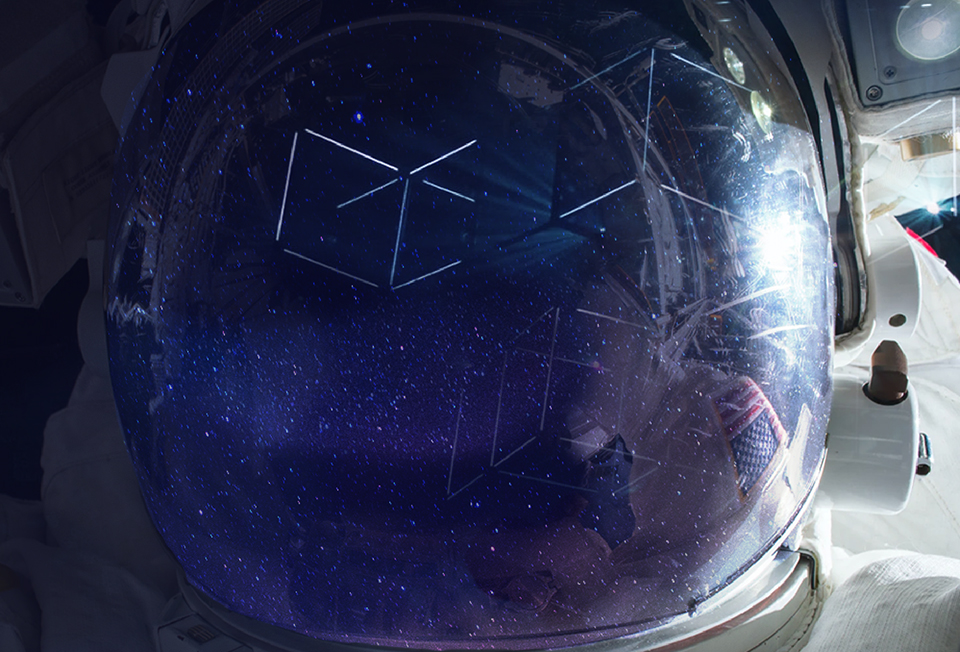CSUN Students Join Forces with NASA to Design Next-Generation Spacesuits

CSUN ARCS students are developing spacesuit information displays within augmented reality environments to assist astronauts in conducting spacewalks more effectively. Image courtesy of ARCS.
California State University, Northridge’s Autonomy Research Center for STEAHM (ARCS) have been invited to participate in the NASA Spacesuit User Interface Technologies for Students (SUITS) Artemis Student Challenge.
SUITS is a software design challenge that tasks undergraduate and graduate students from across the United States with developing spacesuit information displays within augmented reality environments to assist astronauts in conducting spacewalks more effectively; which can otherwise be known as extravehicular activities (EVAs).
“This unique opportunity allows students to contribute to real missions and gain invaluable skills in engineering collaboration teamwork that just cannot be taught in a classroom setting,” said CSUN mechanical engineering professor Nhut Ho, the center’s director. “The work is essential to create an esteemed infrastructure where astronauts can use enhanced displays and controls using software applications to make crewmembers more dynamic in tasks throughout their mission using integrated sensors.
“Because of the NASA SUITS project, ARCS students are able to explore their full potential and gain experience with skills to support the next generation of technology necessary for future extraterrestrial explorations,” Ho said.
The CSUN students are one of 20 teams advancing to the next phase of the SUITS 2021 Challenge. The teams will spend the next several months coding their augmented reality-based prototypes and preparing to share the finished product with NASA personnel. This opportunity provides students with the opportunity to work hands-on by making significant contributions for NASA and the Artemis mission. NASA’s Artemis mission will transport a man and the first woman to the Moon, which is groundbreaking for these students.
In 2019, NASA awarded CSUN $3 million to establish the NASA Autonomy Research
Center for STEAHM (ARCS), where STEAHM stands for science, technology and engineering, entrepreneurship, arts, humanities and mathematics on campus. The center will serve as a research base for faculty and students from six of the university’s colleges as they study various aspects of increasingly autonomous (IA) systems — which range from autopilot to advanced systems that are able to adapt and evolve.
CSUN’s SUITS 2021 Challenge team, Team Navi, is under the supervision of mechanical engineering professor Nhut Ho from the Department of Mechanical Engineering, psychology professor Thomas Chan and human factors and simulation engineer Jason Holland with NASA’s Armstrong Flight Research Center (AFRC).
“Our team was able to complete a technical design proposal for the project and establish a nimble, collaborative framework using different software tools to adapt to the challenging circumstances inflicted by COVID-19,” said computer science student Sarkis S. Mikaelian, a research fellow at ARCS and a member of Team Navi.
Team Navi is building an augmented-reality, heads-up display system to assist NASA’s Artemis astronauts as they explore the surface of the moon. The mission, which aims to establish a sustainable human presence on the moon in the next decade, will require modern and efficient information systems. Whereas in the Apollo mission, paper checklists, wristwatches and constant communication with mission control were a necessity, that is not the case now.
The Navi system will consist of several modular software components that include time monitoring, a navigation system, procedure instructions, an enhanced vision system, suit telemetry, and more. In addition, Navi includes external hardware for visual/inertial navigation, ambient light sensing and collecting spectrographic data from samples. The heart of the system will be a Microsoft HoloLens 2, a pair of mixed reality smart glasses that use multiple sensors, advanced optics and holographic processing to be used to display information and blend seamlessly with the real world.
Upon successful testing, each of the proposed user interface displays will have the potential to help astronauts on lunar explorations for the Artemis program.
For more information on ARCS, visit https://arcs.center/. To learn more about NASA SUITS, visit https://stem.nasa.gov/artemis/.

 experience
experience